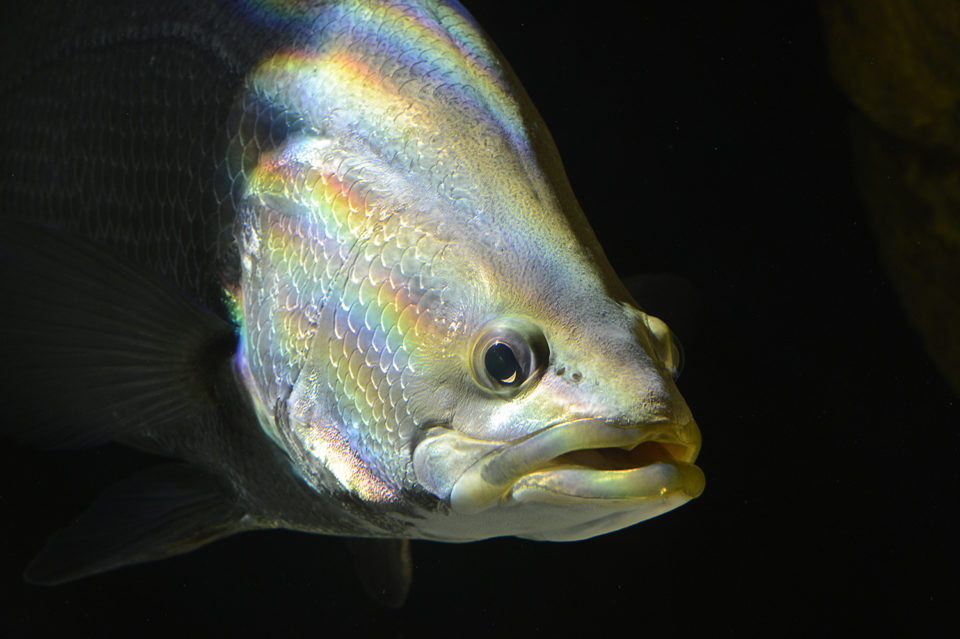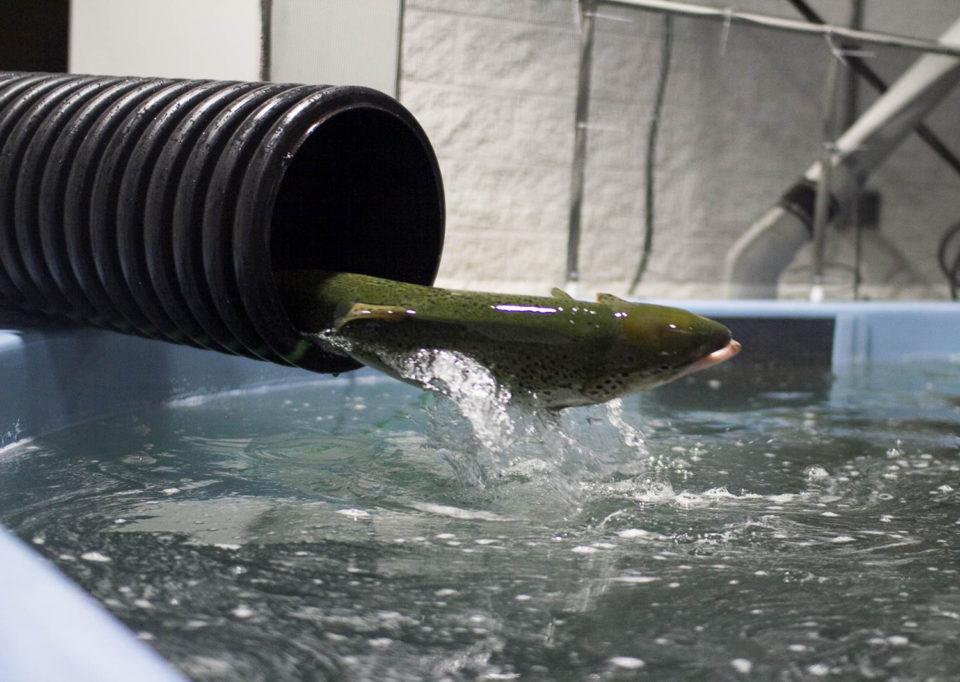Researchers, feed manufacturers and producers are working tirelessly to ensure RAS-raised fish taste better than ever

John Davidson acknowledges that off-flavor is an issue with fish raised in recirculating aquaculture systems (RAS).
Davidson, a senior research scientist for The Freshwater Institute, a West Virginia, USA-based nonprofit program aimed at providing solutions for environmentally responsible aquaculture, has read (and written) countless research papers, attended conference sessions and participated in ongoing research about the musty odor and taste that affects fish species ranging from Arctic charr and barramundi to rainbow trout and salmon.
“We don’t keep this issue a secret,” he told the Advocate. “It’s a serious issue that we need to pay attention to and we need to be working together to come up with solutions to move past it so it’s no longer a hot topic.”
Off-flavor occurs when bacteria such as streptomyces, myxobacteria and actinomycetes build up in the water, producing geosmin (GSM) and 2-methylisoborneol (MIB), which are absorbed into the fish gills and lipid-rich tissues and accumulate in the fish flesh.
“Off-flavor is an issue in RAS because these systems use relatively little water and have a high potential for biofilm growth and the off flavor-producing bacteria become part of that biofilm,” Davidson explains. “Those [bacteria] are rapidly absorbed by fish and the taste is off-putting to consumers.”
Without creative strategies to mitigate the unpleasant odor and taste, Davidson acknowledges there could be a negative perception about farmed fish among consumers that impacts sales. Fortunately, creative efforts to address off flavors abound.
A 2019 study published in the Journal of Food Science and Technology noted that methods such as ozonation, advanced oxidation processes, algicides and activated carbon show promise for degrading the compounds that produce the off-flavor.
Davidson notes that microbial solutions, which add bacteria to the water that out-compete the bacteria that cause the off-flavor, can also be effective. To date, depuration (or purging) with clean water appears to be the most effective method for addressing the issue. This process involves taking fish off of their feed and moving them to separate tanks where concentrations of GSM and MIB are lower. It can take a few days or more than a week, depending on the species.
Keith Wilda, co-owner of Blue Stream Aquaculture and managing member of Great Falls Aquaculture, both businesses based in Massachusetts, USA, notes that purging trout takes just 48 hours while purging barramundi takes at least five days.
The extra step is worth the effort, according to Wilda. He has also tried drum and bed filters, ozone and ultraviolet light and disinfecting the water in his RAS. Each provides a slight improvement in flavor but purging has the most noticeable positive impact.
But while purging might be effective it requires higher consumption of clean water, additional time in the tanks and changes to visceral fat, texture and mass that can impact the market price (and profit) for farmed fish.
“Every time you take fish off feed, you lose mass,” Wilda said. “You don’t just lose visceral fat, you take the risk of quality changes in the texture of the fish so the least amount of purge time, the better.”

Biotechnology company KnipBio, which is focused on nutritional solutions for the aquafeed sector, is exploring feed additives to reduce off-flavors and ensure that purging does not affect fish mass – and revenues. The Massachusetts-based commercial feed manufacturer is conducting a pilot program with several RAS facilities to determine whether salmonids and other finfish fed a diet containing 5 percent of their single-cell protein product have lower levels of GSM and MIB.
“We are extremely encouraged by what we have seen so far, working directly with RAS producers,” said Larry Feinberg, CEO of KnipBio. “Our next step is to expand our findings to include other species and to optimize the feeding regime to maximize overall performance.”
Although KnipBio is still conducting trials, the feed has been FDA-approved and is being manufactured at commercial scale. Feinberg believes it is the first commercial nutritional solution to address off-flavors in RAS.
Wilda signed on to participate in the feed trials in 2019 and has been impressed with the initial findings, noting that there were significant reductions in off-flavor in their RAS-raised trout.
“We recognize if we are to continue to grow, our industry needs to move away from our dependence on fishmeal and the feed-fish-to-fish paradigm,” he added. At a Feed-to-Fork event that included leading Boston restaurateurs, seafood experts praised the flavor of the rainbow trout included in the KnipBio feed trials at Blue Stream Aquaculture. “The fish performed well in terms of growth and health and the taste was superb.”
Back at the Freshwater Institute, Davidson is optimistic about the inroads being made to address the issue of off-flavor in RAS-raised fish and hopes that active research continues and the results are shared.
“This is an area where everybody needs to share information in the RAS industry because [if off-flavor is not addressed] it could become a black eye for this relatively new product,” he said. “We are actively providing information to try to make sure that investors and producers have the necessary information and develop methods to help farms mitigate it.”
Follow the Advocate on Twitter @GAA_Advocate
Now that you've finished reading the article ...
… we hope you’ll consider supporting our mission to document the evolution of the global aquaculture industry and share our vast network of contributors’ expansive knowledge every week.
By becoming a Global Seafood Alliance member, you’re ensuring that all of the pre-competitive work we do through member benefits, resources and events can continue. Individual membership costs just $50 a year. GSA individual and corporate members receive complimentary access to a series of GOAL virtual events beginning in April. Join now.
Not a GSA member? Join us.
Author
-

Jodi Helmer
Jodi Helmer is a North Carolina-based journalist covering the business of food and farming.
Tagged With
Related Posts

Intelligence
Common off-flavors in channel catfish following partial pond harvest
The authors conducted a study to determine whether channel catfish systematically develop off-flavors after partial harvest as well as the possible origins of the flavors.

Health & Welfare
Managing pre-harvest off-flavors in pond-raised catfish
Although causes of pre-harvest off-flavors in catfish differ due to climate, water quality and pond hydrology, blue-green algae is a common culprit.

Intelligence
Off-flavors in aquaculture products, part 1
Off-flavors in pond and recirculating aquaculture systems have occurred through the biological production of geosmin and 2-methylisoborneol. The compounds are rapidly absorbed through the gills of fish, but depuration can require days or weeks.

Intelligence
Measuring, maintaining freshness in aquaculture products
Rapid chilling at harvest can help preserve the freshness of fish, delaying the onset of autolytic reactions and growth of microorganisms.

